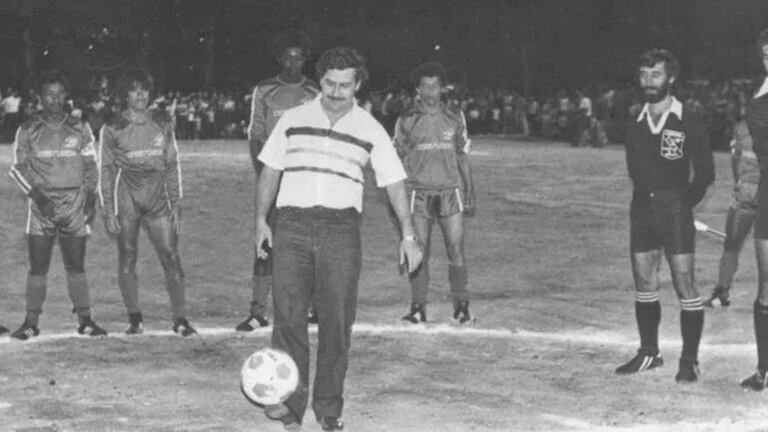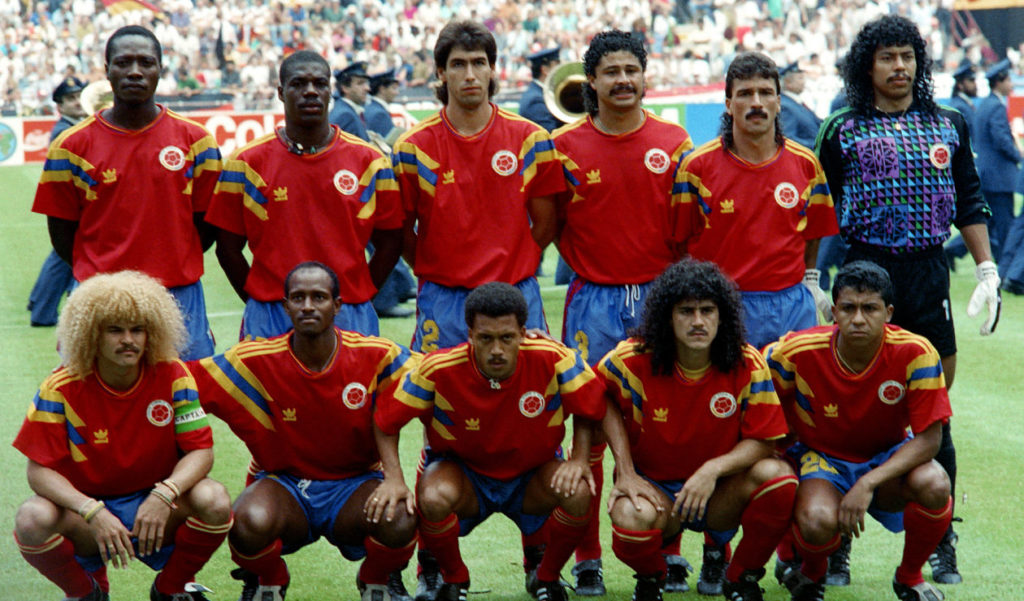
During the 1980s and 1990s, Colombian football experienced a time of splendor and success on the field, but it was also marked by a dark shadow: drug trafficking. This activity marked a period of conflict and violence in Colombian history, driven by the profits of the illegal business of crime in the era of the big drug cartels. It was the era of narco football in the land of coffee.
In a country where organized crime had an increasingly suffocating presence, drug money found in sports a way to legitimize itself and expand its influence. This relationship between drug trafficking and Colombian football left an indelible mark on the history of the national sport, with consequences that still echo in the collective memory and that today still cast a shadow of doubt over the beautiful game in Colombia.
Golden era for Medellin and Cali teams
Drug money infiltrated the foundations of Colombian football in a deep and subtle way. The top teams of the time, such as Atletico Nacional and America de Cali, were the main recipients of these illicit funds, thanks to the existence of the two most powerful drug cartels, Pablo Escobar’s in Medellin and the Rodriguez Orejuela brothers in Cali.
Through huge investments, these teams were able to build competitive squads and achieve national and international success. The sporting successes, in many cases, were directly related to the financial backing provided by drug trafficking.
The national football team was not exempt from the influence of illicit money. Despite having talented players, pressure from organized crime corrupted players and directors alike. Private interests and hidden agendas hindered the development of football at the national level, affecting the national team’s potential to compete in international events.
There were successes and sporting glory, but behind them a darker reality was hidden. The victims of drug trafficking in Colombian football were many and varied. From players threatened and coerced to pay tribute to drug lords, to managers pressured to manipulate results, the impact of organized crime spread throughout the fabric of the national sport.
There is even an accusation, so far unproven, that Medellin Cartel leader Pablo Escobar bought the 1989 Copa Libertadores, the continental title won by Atletico Nacional. Threats, large sums of money, pressure, and many other stories have been revealed over the last 35 years about Pablo Escobar’s ambition for Nacional to make that international leap.
Behind the success, the shadows
Although Atletico Nacional and America de Cali were the clubs that benefited the most from the infiltration of drug trafficking, there were many other teams that were linked to the mafias during those years. Union Magdalena, Millonarios, Santa Fe, Deportivo Independiente Medellin… all of them were tainted with illicitly gained money.
As for sports professionals, there were dozens of stories of players and coaches who succumbed to the temptations of easy money. Some of them died tragically as collateral victims of corruption and gambling. This was the case of international defender Andrés Escobar, murdered in 1994, after scoring an own goal during the FIFA World Cup in the United States. It is rumored that his death was linked to problems with drug cartels.
Others were more directly implicated, such as Albeiro Usuriaga, known as “El Palomo”, another prominent footballer in the 1990s. His career was marred by links to drug trafficking, which ultimately contributed to his tragic death in 2004.
Among the players that the justice system found guilty of drug trafficking are Chicho Serna, Jhon Viafara, Omar Dario Cañas, Diego Leon Osorio, Wilson Perez, Jhon Jimenez Guzman or Pipe Perez. Others, although never judicially convicted, were related in one way or another to drug trafficking: Rene Higuita, Leonel Alvarez, Antony de Avila, Fredy Ricon or Faustino Asprilla, over whom the long shadow of narco-football was cast.
These Colombian football players, though brilliant on the field, were marked by their association with the dark world of drug trafficking, reminding us of the complexities and dangers that surrounded football during that tumultuous era in Colombia.

The end of the big cartels
The 21st century marks the decline and end of the large drug cartels. Although drug trafficking has not diminished in Colombia, and in fact has not stopped growing, today coca cultivation and cocaine exports are the province of a multitude of illegal organizations that share the profits.
The super-powerful criminal organizations of thirty years ago, infiltrating every aspect of Colombian public life and daring, as happened in that sad era, to challenge the State and civil society in all spheres, including politics and sport – these no longer exist.
Despite efforts to eradicate the influence of drug trafficking in Colombian football, its effects linger in the country’s collective memory. The legacy of this dark relationship remains an open wound in the history of the national sport. The fight against drug trafficking is a constant that requires the commitment of all involved, from sports authorities to fans, to ensure that football is a healthy pursuit free of corrupt and dangerous influences.
See all the latest news from Colombia and the world at ColombiaOne.com. Contact our newsroom to report an update or send your story, photos and videos. Follow Colombia One on Google News, Facebook, Instagram, and subscribe here to our newsletter.

